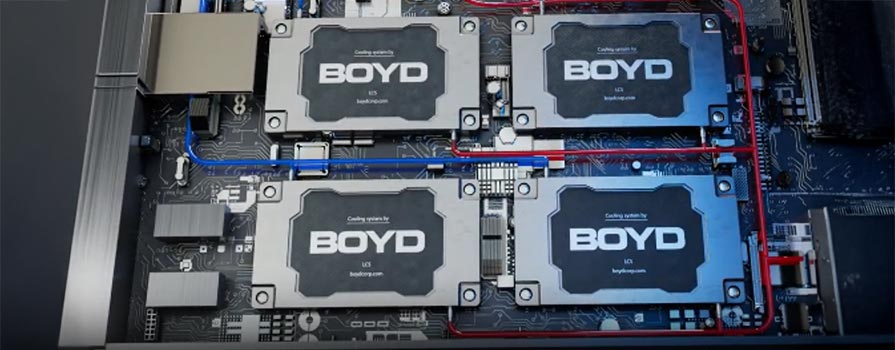In this second blog of our series on high-volume technical printing, we will be discussing the various screen-printing equipment options at Boyd for technical printing. We will examine the different attributes of each type of printing press and assess how they can influence your projects. If you missed our first blog in this series, we encourage you to take a moment to read it
here to gain a preliminary understanding of Boyd’s technical printing methods and their implications for high-volume programs.
As previously mentioned, there are two main screen-printing processes used by Boyd for technical printing programs – sheet-fed and roll-to-roll. As we’ve established, sheet-fed printing is better suited for design development and roll-to-roll printing is ideal for high-volume projects. The reasons will become more clearer as we go through the characteristics of Boyd’s printing equipment.
Before getting into the specifics, an important concept to understand about all the presses is that the run rate is set by the dryer capacity. The attributes of the dryer as well as the project influence the production run rate. For example, functional inks often require longer to cure. Therefore, if a technical printing program utilizing functional inks is run on a press with limited drying capacity, it will need to go through the dryer at a slower speed to cure completely. However, if the same project were to run on a press with a large drying capacity, it would run at a faster speed since it would be in the dryer for longer. For every new project, the drying parameters must be developed according to that project’s specifications, which ultimately determine speed.
Sheet-Fed Screen Printing Presses
As with all screen-printing equipment, the distinct capabilities and constraints offered by each of Boyd’s sheet-fed printing presses determine the viability of the equipment for a potential project. Sheet-fed presses yield varying print area dimensions, for example, from 22″ x 30″ to 48″ x 98″. Another critical feature to be aware of is the run rate for these presses, which on average can range from 160 – 225 impressions per hour. Finally, the dryers that accompany the sheet-fed printing presses at Boyd include thermal UV dryers.
Roll-to-Roll Screen Printing Presses
For roll-to-roll printing, Boyd employs the following presses to fulfill an assortment of technical printing project requirements.
Via Printing
The most noteworthy feature about two of the screen printing presses utilized by Boyd for roll-to-roll technical printing is the presses’ ability to print vias (also known as through-hole printing). When printing vias, once the vias are lasered into the material, ink is printed on both sides of the roll, forcing the ink through the vias to create a circuit. But the pushing of the ink through the holes leaves excess ink behind on the print bed. If a sheet-fed method were to be utilized, the operator would have to clean the print bed after every pass, adding additional steps and time to the process. However, Boyd’s presses eliminate the need for this added step because they have blotter paper positioned on top of the print bed to absorb all the leftover ink. This blotter paper advances along with the roll of material to ensure that the ink does not smear as the sheet moves forward. In general, these presses print one color at a time, maintain a print area of 20″ x 20″, and can accomplish tolerances around 0.007″. Using UV and thermal dryers approximately four meters in length, the run rate for these presses is about 500-800 impressions per hour.
Tight Tolerance Printing
Another roll-to-roll printing press at Boyd also only prints a single color at a time, yet it has a print area of 20″ x 24″. The main advantage of this press is printing parts with extremely tight tolerances. This press can reach tolerances within 0.001″ – 0.002″ of the original specifications. With a 12-foot tunnel dryer, our tight-tolerance printing press offers a run rate of around 150-200 impressions per hour.
Efficient Run Rates and Multi-Color Printing
The last press at Boyd’s disposal offers a print area of 18″ x 19.5″ and meets tolerances within 0.007″ – 0.010″. Its most significant benefits include its two print stations and substantial drying capacity, which allows it to produce parts at a much higher speed. With a 40-foot and 60-foot tower dryer, this press employs dryers that are much larger than our other presses. The tower dryers allow for each part to stay in the dryer longer, permitting the part to run through the process at a faster rate. The other advantage of this press is that it’s a two-color press. The printing process begins by laying down the first color, followed by the punching of a fiducial next to the image for registration and the sheet running through the first tower dryer. Next, utilizing the registration punch to align with the first ink layer, a second color can be laid down, ending with the sheet going through the second tower dryer. These two capabilities are what make our final roll-to-roll technical printing press the fastest print line at Boyd with a run rate of 800 – 1,000 impressions per hour.
When comparing the characteristics of the sheet-fed presses to the roll-to-roll presses, it is apparent why roll-to-roll printing is more suited for high-volume technical printing projects. Not only can these presses achieve much higher run rates, but they can also produce parts at much tighter tolerances and accomplish efficient through-hole printing.
With our selection of in-house technical printing equipment, Boyd aims to provide our customers with the printing technology that best fits their specific needs. Boyd is equipped to accommodate a vast array of technical printing project requirements with volumes ranging from low to high. To learn more or to discuss your unique technical printing challenges,
reach out to our experts.





